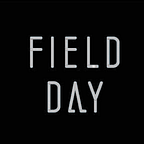Teachers are Using Siftr to Create Citizen Science Projects
Siftr is a really simple app for citizen science projects. It allows teachers to make a Siftr project to specify any data they want their students to collect. It allows the student to take photos, add a caption, tag, numerical data, comment, like, and share. The teacher gets to choose whatever data they collect. All of the data is geolocated, date and time-stamped, and easy to download in a .csv file.
Like all of our tools here at Field Day, Siftr is grounded in important educational theory. It is guided by four main principles: perceptual attunement, situated learning theory, collaborative vocabulary building, and professional practice. Before we lose you, let’s walk through each one.
Perceptual Attunement: Tuning-in
Think of perceptual attunement as tuning-in — to a channel, a station, whatever. This is where the Siftr’s gamification elements come in. Siftr’s game-like features give the users a focus and goals and make it fun.
Let’s face it; the world is too much to take in all at once. We constantly filter. One-celled animals perceive the world for what it is, but we humans are complex. I like the metaphor of tuning-in to a radio channel, because by tuning-in to one, you simultaneously tune-out all the others. Perceptual attunement is about shifting or nudging your perception.
And the thing is, the prompt stays with you. Now, even without your phone, in the future, you’d notice those trees whose names you learned.
Situated Learning Theory: Learning in the Real World
The world is complex and messy. This is where the next guiding principle — situated learning theory — comes in. To the point, situated learning is doing a real thing in a real context. If textbooks and most lectures are abstract, situated learning is concrete. It is hands-on, up close and personal, action before reflection, getting to the heart of issues and conflict without having to spell anything out. Traditional tree categories — boreal, broadleaf, evergreen, and tropical — are simply abstractions. We are used to being taught by abstraction — by textbooks with polished, nicely contained categories we memorize and quickly forget. Siftr, however, defies abstraction. It gets students looking for real-world examples. It engages them in their community and becomes a social process. When learning takes place right in their communities, they get invested.
This is experiential — the opposite of memorizing terms on flashcards. Roger Schank, a leading education theorist, says that students don’t learn from memorizing answers; “they learn from developing questions for themselves that they can begin to find answers to.” And according to the writer Maria Wisława Szymborska, “any knowledge that doesn’t lead to new questions quickly dies out; it fails to maintain the temperature required for sustaining life.”
Collaborative Vocabulary Building: Learning the Language
As you can see, Siftr creates shared experiences amongst those involved. A part of this is the third guiding principle — collaborative vocabulary building. Think of the tree categories. The four categories were specific, but still vague. That is the point. In Siftr, broad categories are great to start with, then the users can begin to build more nuanced vocabulary as more prompts are added — kind of like leveling up in a game. Wouldn’t you like your students to be able to identify the trees around their school? What about when they go home or travel for vacation? You could work with another teacher and talk about it, iterating on and developing the Siftr projects. Would you remain interested in discovering wildlife in your neighborhood if you couldn’t talk about it? Unlikely. Students won’t either. To remain intrigued, students need to feel as if they are moving along the novice to expert continuum. And collaborative vocabulary building is one way of doing just that. New words give them containers to add new information to.
Move from Knowledge to Professional Practice
We refer to the fourth and final guiding principle of Siftr as the move from knowledge to professional practice. Data collecting is a key practice that scientists engage in. The action of going and collecting turns into what Field Day program director, David Gagnon, calls the Magic Moment. This is the moment where the student moves from doing an activity to imagining themselves as a scientist. It's almost like pretending. But don’t all experts start that way?
Get Started!
Unlike many Citizen Science methods and apps, Siftr is easy —most projects take five minutes — and requires little technical skill to use. Literally, anybody can make a Siftr. Siftr encompasses any discipline and has been used in courses ranging from Folklore and Art to Chemistry and Geology. Guess what? It's free!
